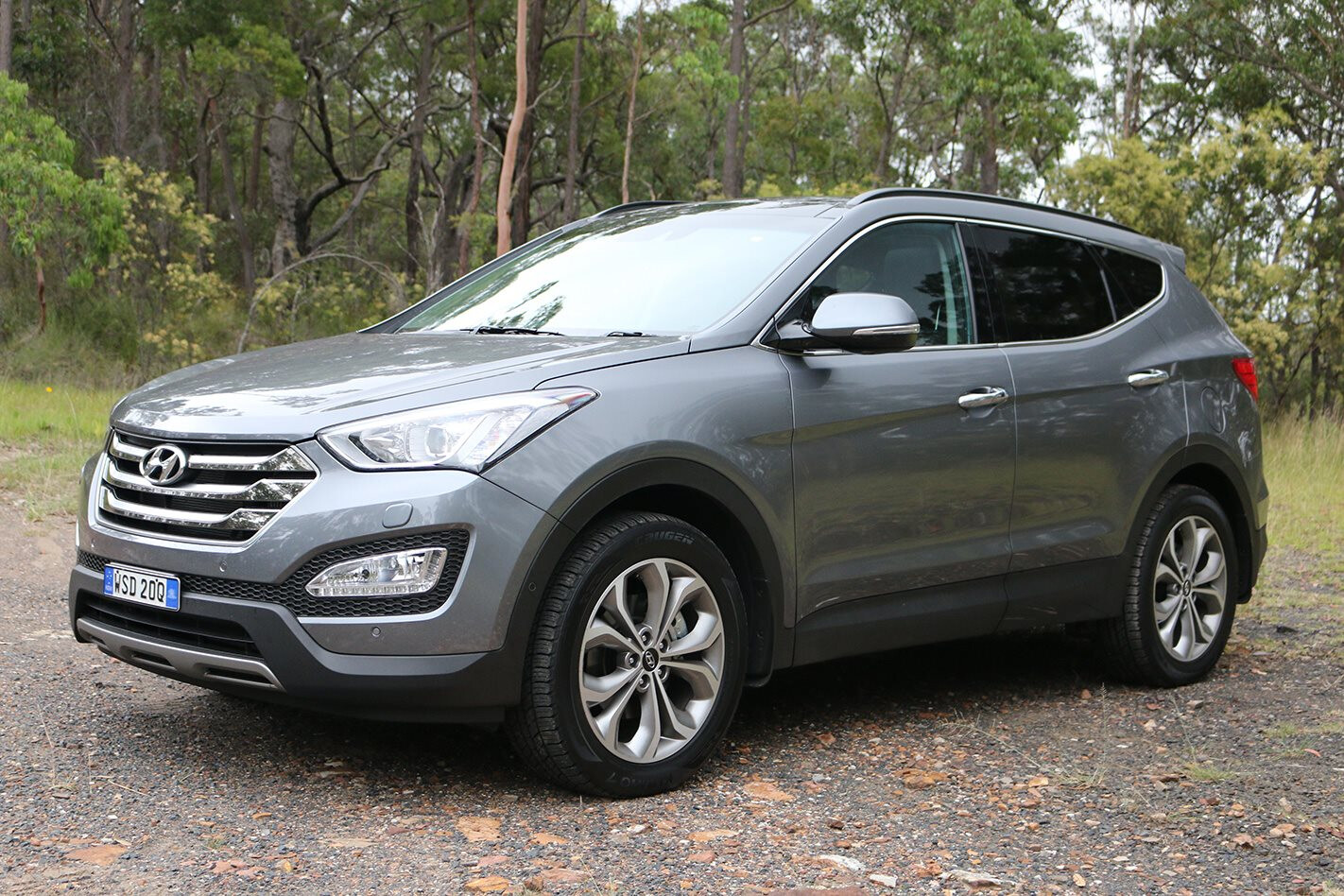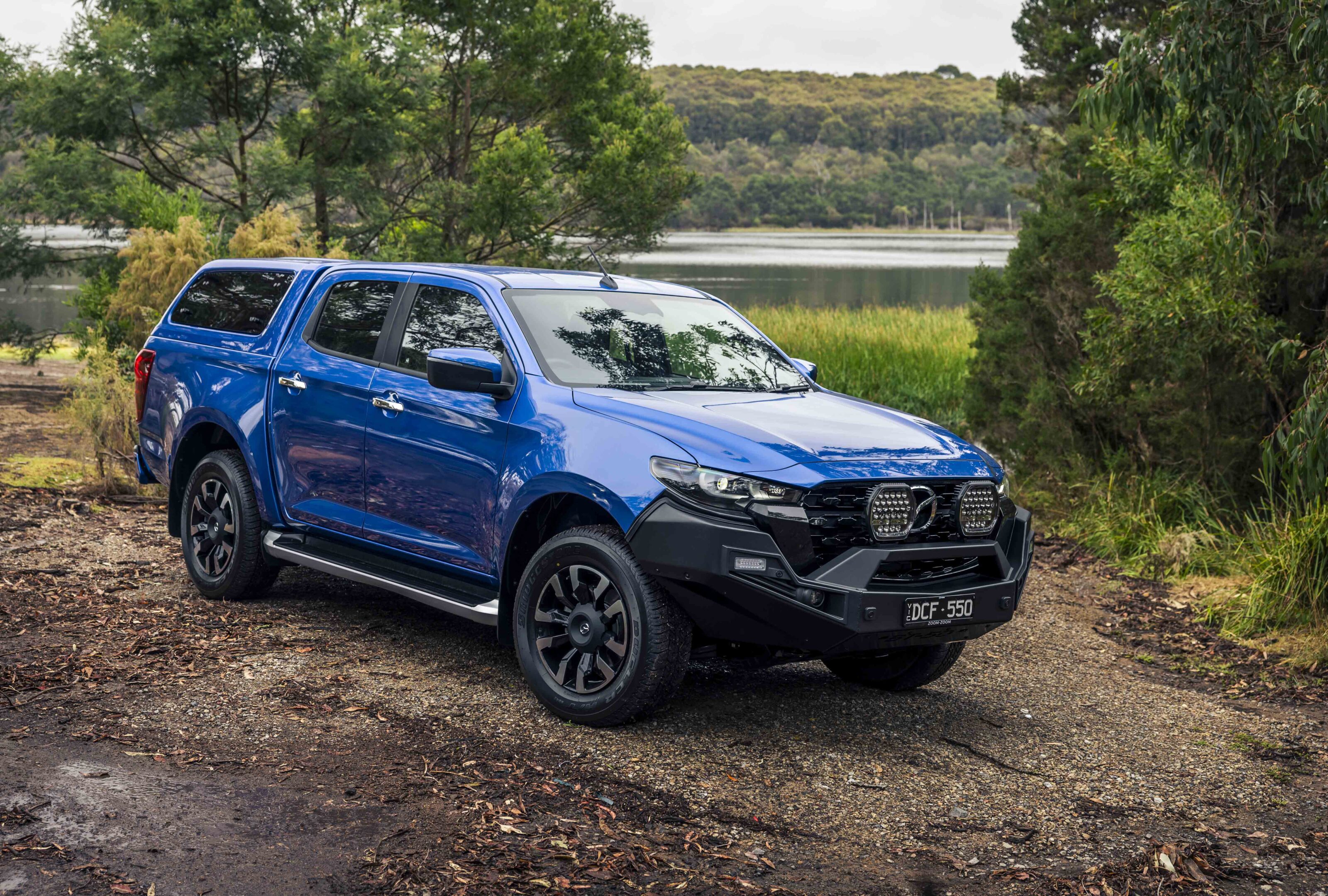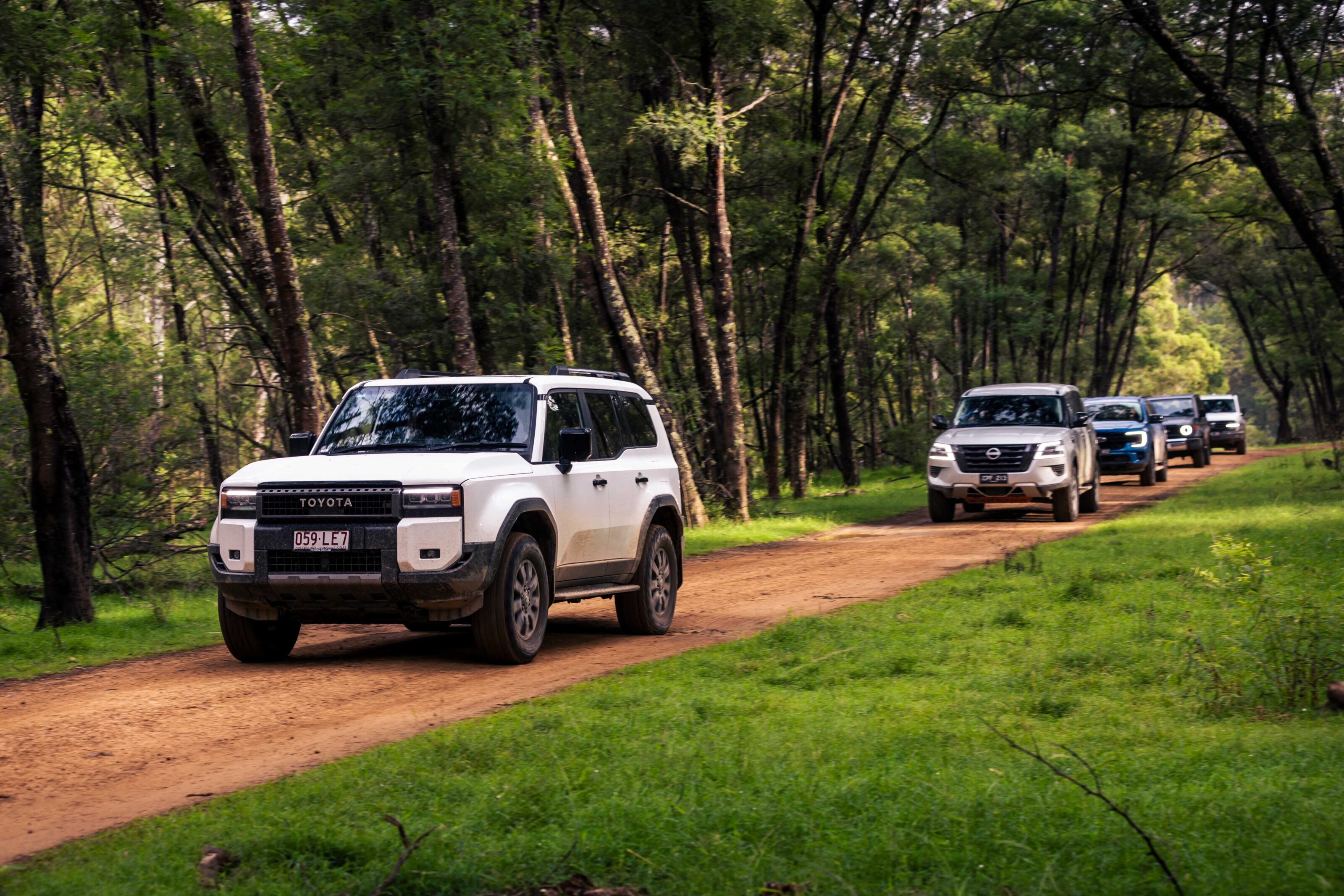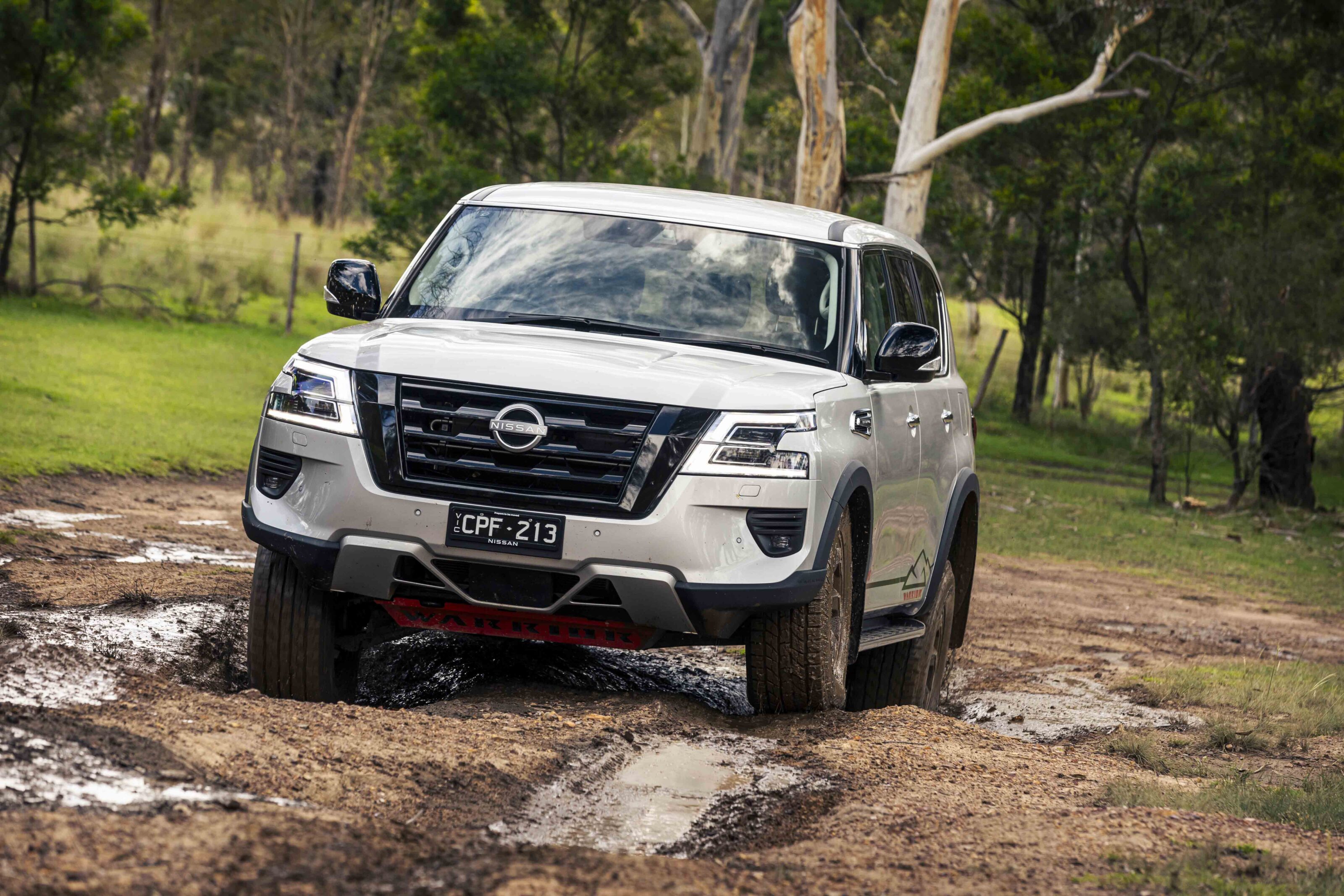Price and specifications
Price: $53,240
Engine: 2.2-litre four-cylinder turbo diesel, 145kW at 3800rpm, 436Nm at 1800-2500rpm
Transmission and 4WD system: 6-speed auto, on-demand high range 4WD
Braked tow capacity: 2000kg
Spare tyre: Full size
Fuel tank: 64 litres
Fuel use (claimed): 7.3L/100km
Fuel use on test: 9.6L/100km
Approach/departure angles: 16.9 degrees, 21.5 degrees
Ground clearance: 185mm
WHAT’S THE DEAL?
The Santa Fe comes with petrol or diesel propulsion. For now, though, the petrol model is limited to the 2.4-litre four-cylinder, which is underdone for the circa-1.8-tonne body (there’s 141kW and 242Nm).
It’s the diesel that makes more sense (more on that later) and is the model we’ve focused on for this test.
The range kicks off at $41,490 (plus on-road and dealer costs) for an Active manual; add $2500 for the auto most buyers will choose. As with all Hyundai’s there’s a reassuring five-year, unlimited kilometre warranty. For that you get 17-inch alloy wheels, reversing camera, rear parking sensors, Bluetooth, auto headlights, cruise control and a basic 4.3-inch touchscreen controller. There’s also stability control and seven airbags – dual front, driver’s knee airbags, rain-sensing wipers, front side airbags and side curtain airbags, although those curtains don’t cover the third row of seats.
An Elite ($48,490) adds smart key entry and start, 18-inch wheels, an electric tailgate, retractable curtains for the middle windows, dual-zone automatic air-conditioning, partial leather seats, extra splashes of chrome, tinted windows, electric driver’s seat and a larger 7.0-inch touchscreen with satellite-navigation.
At the top of the Santa Fe tree is the Highlander, the model we’ve tested here at $53,240. It adds 19-inch wheels, an electric passenger’s seat, heated front and middle row seats, ventilated front seats, self-parking system teamed with front parking sensors and an extended glass sunroof. There’s also a lane departure warning system, which can beep too much if you get near the lane markings.
White is the only standard colour, with all others adding a $595 premium.
PRACTICALITY
The Highlander has an elegant interior, with blue illumination different from the more traditional reds and greens. It’s a classy cabin with decent storage areas and a logical layout for the main controls. One gripe is the central touchscreen that dims separately to the instrument cluster – and even on its dimmest setting it’s too bright for dark country roads.
Space in the middle is also reasonable, although those in the rear would need to be smaller or flexible; head and leg room is tight and even bigger feet might struggle for space. It’s fine for the kids, though. With seven seats the Santa Fe has a clever interior but like many once all seven seats are in use the luggage capacity is reduced to a couple of soft bags. But limit it to the first two rows (the seats easily flip and fold) and it’s a more useful flat cargo area. The centre seat has 40-20-40 split-fold system, improving versatility, while the rear-most pews can be split 50-50. The rear cargo blind can also be neatly stored in a small underfloor compartment. There are four 12-volt outlets in the car; two in the front, one in the middle row and one in the luggage area.
ON THE ROAD
The 2.2-litre diesel is a willing and sensible companion in the Santa Fe. As an auto it makes 145kW and a stout 436Nm (manual models get slightly less torque, at 421Nm). Teamed with the six-speed auto it accelerates smartly, albeit with a muted diesel rumble. It’s a flexible unit with the torque peak arriving at 1800rpm and holding through much of the rev range. It does a decent job of shifting the sizeable wagon and makes light work of country cruising.
Fuel use, too, is respectable at a claimed 7.3 litres per 100km. Even the 9.6L/100km we achieved during a mix of city and country driving is respectable when compared with the predominantly V6 petrol-powered competition.
Claimed tow capacity is 2000kg for the auto, with the manual rated at 2500kg.
The Santa Fe is comfortable around town and behaves well enough. The suspension is soft enough to deal with average bumps but still keeps the car well controlled. Steering, though, is a bit lifeless and its responses aren’t as accurate as some. The adjustable steering feel – there are three different settings – is more gimmicky than anything else; we found the middle Normal setting best suited. Tyre grip is only average, something more noticeable on a wet road, but it’s otherwise relatively capable.
OFF-ROAD
In a rarity for the class the Santa Fe gets a full-sized spare tyre. It’s tucked under the rear of the car so will take some wrangling to access, but at least it’s there – plus it’s out of the way of the luggage compartment.
There’s a modest 185mm of ground clearance, which helps it scuttle over rocks and obstacles. Underbody protection is basic – despite the chunky metal chin visible from the front – and predominantly plastic, so best not put to the full bash-and-crash test.
Drive is diverted to the four wheels via an on-demand high-range only system, relying heavily on the traction control to account for wheelspin. There’s also a centre diff lock, but it doesn’t do much in terms of improving traction. And the traction control isn’t set up for off-road driving. Over our fairly basic test track it had the front left and right rear wheels spinning concurrently and no amount of throttle was going to convince the electronics to change the situation. In the end the only way up would have been to hit it with more speed, which will work in some situations but is far from ideal and will get you stuck in other situations.
VERDICT
There’s lots to like with the Santa Fe, starting with the practical, well-priced body. The diesel engine, too, is a win in a market segment where thirstier petrol models reign. And while we commend the full-sized spare tyre, some extra attention with the traction control system would go a long way to improving its modest off-road credentials.
Get the latest info on all things 4X4 Australia by signing up to our newsletter.





